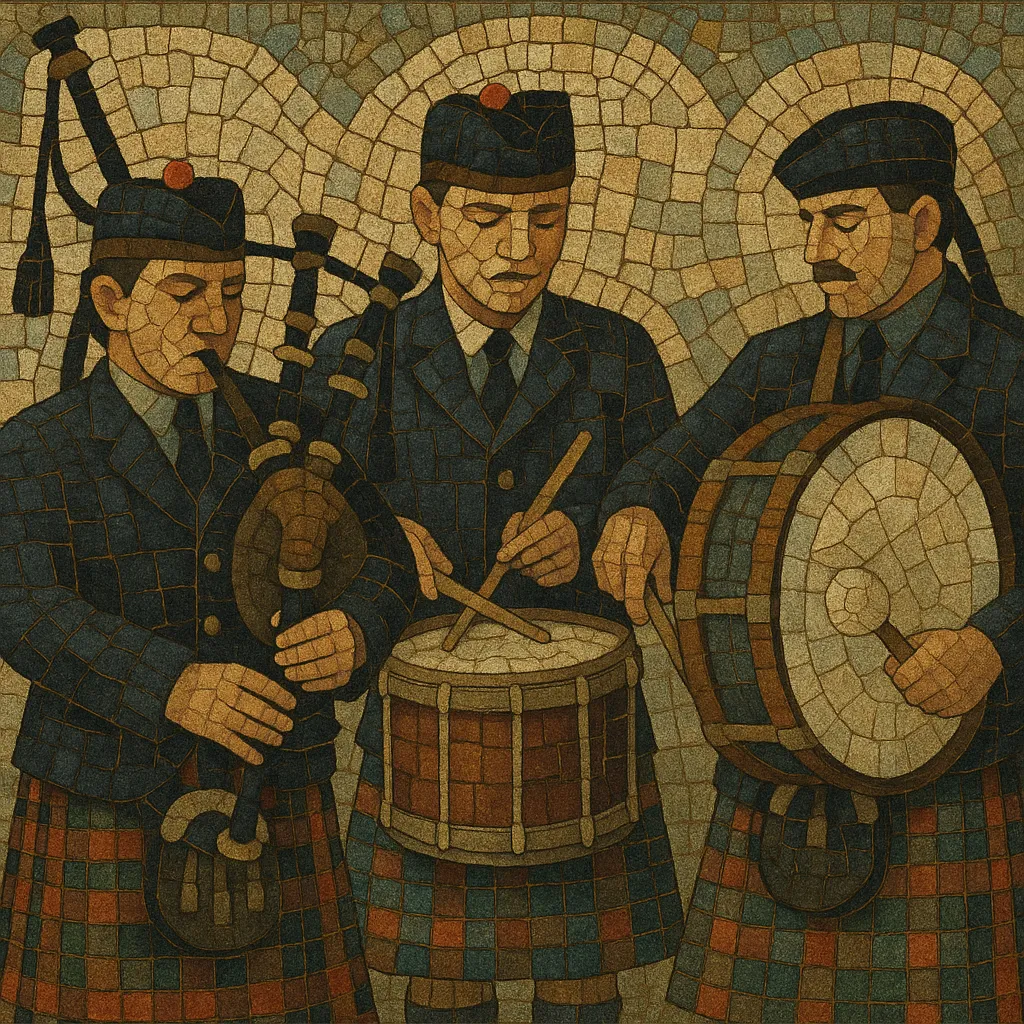Pipe band music is the ensemble tradition centered on the Great Highland Bagpipe accompanied by a corps of high-tension snare drums, flourishing tenor drums, and bass drum. It evolved from Scottish Highland regimental practice and community bands into a precise, competition-driven art form.
The idiom is defined by unison piping lines ornamented with codified gracenote figures, tight rhythmic interplay with rudimental Scottish drumming, and repertoire forms such as 2/4 and 6/8 marches, strathspeys, reels, jigs, hornpipes, and modern medleys. While rooted in Scottish heritage, pipe band music is now an international performance and contest tradition with world-class ensembles across the UK, Ireland, North America, Oceania, and beyond.
Pipe band music emerged in the 1800s within Scottish Highland regiments, where pipers provided signals, morale, and ceremonial music. As military fife-and-drum practices intersected with the Great Highland Bagpipe tradition, the modern ensemble format of pipes with a drum corps took shape.
By the late 1800s, civilian pipe bands formed in towns, workplaces, and societies across Scotland and the Scottish diaspora. Early competitions codified ensemble standards, repertoire, and uniform presentation, laying foundations for the disciplined precision associated with the style.
In 1930, the Scottish Pipe Band Association (now the Royal Scottish Pipe Band Association, RSPBA) was established, formalizing grading systems, contest rules, and adjudication criteria. Post-war decades saw explosive growth in Canada, the United States, Australia, New Zealand, and Ireland, with national associations and championships mirroring Scotland’s competitive model.
Improved instrument design (chanter bore, reed manufacturing, synthetic drone reeds) and drum technology (high-tension snares, modern heads) enabled higher pitch, stability, and articulation. Medley competitions encouraged creative arranging, harmonic “seconds,” tempo modulation, and thematic programming, while traditional MSR (march–strathspey–reel) sets preserved core idioms. Today, the World Pipe Band Championships in Glasgow are the pinnacle event, showcasing stylistic rigor and innovation from elite bands worldwide.


